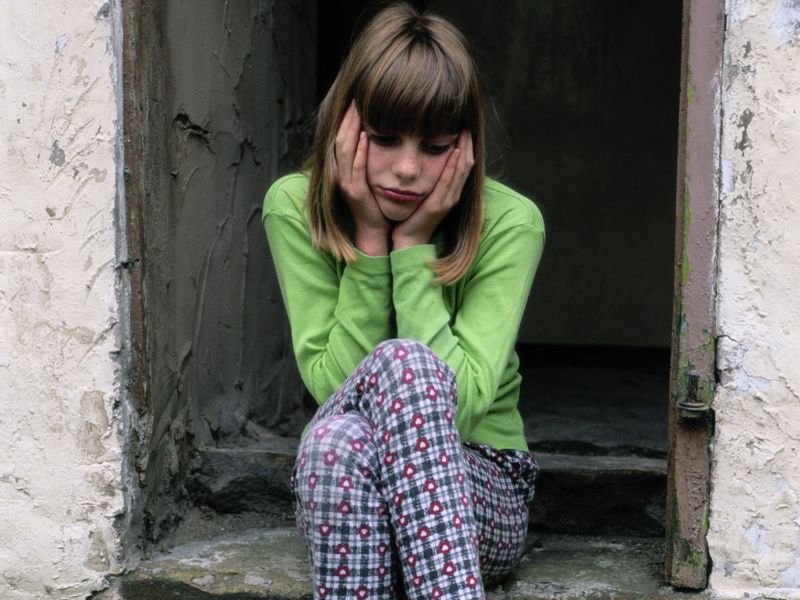By Steven Reinberg
HealthDay Reporter

MONDAY, April 8, 2019 (HealthDay News) -- Suicide attempts and talk about suicide are rising alarmingly among America's kids, with emergency departments seeing a near doubling of cases over less than a decade, a new study reveals.
Among children aged 5 to 18, suicidal thoughts and attempts led to more than 1.1 million ER visits in 2015 -- up from about 580,000 in 2007, according to an analysis of U.S. data.
"What we found was very troubling," said lead researcher Dr. Brett Burstein, a pediatric emergency medicine doctor at Montreal Children's Hospital in Canada.
Half of the patients were 13 and older, half younger, with 43% between 5 and 10 years of age, the study found.
Using data from the U.S. Centers for Disease Control and Prevention, Burstein also looked at the proportion of these cases compared to all pediatric ER visits.
The proportion jumped from slightly more than 2% in 2007 to 3.5% percent in 2015, the findings showed.
"It's an alarming trend," Burstein said, noting that suicidal thoughts and attempts are the strongest predictor of completed suicides.
Worse, it's possible that the study sample only catches a small percentage of kids who have suicidal thoughts and behaviors, Burstein said. That's because many kids are seen only by their primary care doctors, or not at all, so many cases are probably unreported.
And Burstein believes that analysis of 2018 data would reveal even greater increases in suicidal behavior and ideation.
What's behind the increase? It's likely a combination of factors, Burstein said, including greater recognition of the problem by parents, schools and doctors.
It could also be that kids are under more stress or are developing depression at higher rates. "Probably, all of those things are at play," Burstein noted.
Other experts agreed.
"We see more stress in children," said Dr. Jefry Biehler, chair of pediatrics at Nicklaus Children's Hospital in Miami.
"This has to be addressed as a public health problem. This is not normal behavior. This is not a phase," Biehler said. "This is a real risk. Suicide ideation, suicide attempts, should be taken seriously."
Maureen Underwood, of the Society for the Prevention of Teen Suicide, said parents need to maintain communication with their children.
"The challenge for adults is to let the youth talk about the problem and not jump in to fix it," Underwood said.
"Our kids may be so emotionally vulnerable, they think about dying. And it would be a whole lot better if we could give them permission to talk about their concerns before they act on them in self-destructive ways," she suggested.
Theresa Nguyen is vice president for policy and programs at Mental Health America.
"Many parents are shocked when these things happen; they didn't know their child was struggling as much as they were," Nguyen said. If parents suspect something isn't right, they should ask what's wrong, she advised.
Dr. Christine Moutier, chief medical officer for the American Foundation for Suicide Prevention, said the increase in suicidal behavior and thinking is "extremely concerning."
To try to reverse this trend, Moutier said that several steps are needed.
For one, pediatricians and emergency doctors need training to recognize and deal with suicidal risks.
Also, parents and schools should be educated on warning signs and steps to take.
According to experts, warning signs include:
- Preoccupation with death.
- Intense sadness or hopelessness.
- Not caring about activities that once mattered.
- Withdrawal from family, friends, sports, social activities.
- Substance abuse.
- Sleep disturbance.
- Giving away possessions.
- Risky behavior.
- Lack of energy.
- Not thinking clearly.
- Dropping grades.
- Irritability.
- Loss of appetite.
The report was published online April 8 in JAMA Pediatrics.
More information
For more on children and suicide, visit Boston Children's Hospital.
Back

The news stories provided in Health News and our Health-E News Newsletter are a service of the nationally syndicated HealthDay® news and information company. Stories refer to national trends and breaking health news, and are not necessarily indicative of or always supported by our facility and providers. This information is provided for informational and educational purposes only, and is not intended to be a substitute for medical advice, diagnosis, or treatment.






